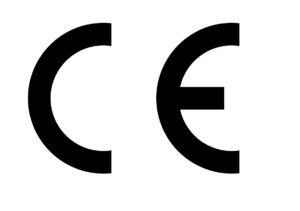Personalized nutrition as a medical device
Posted: July 8, 2021 | Author: Jasmin Buijs | Filed under: Authors, Disclosure of information, Food, Health claims, Information, Nutrition claims |Comments Off on Personalized nutrition as a medical device From May 26 this year, the personalized nutrition space has been enriched with a new piece of legislation: the Regulation (EU) 2017/745 on medical devices (hereinafter: “MDR”). The MDR is, generally speaking, applicable to all personalized nutrition (software) products, including apps and algorithms, with a medical intended purpose. Since most personal nutrition services that are currently on the market are lifestyle related, they will not be affected by the MDR. This will however be different for services that offer dietary advice for the prevention, alleviation or treatment of a disease. This blogpost aims to provide an introduction to the new rules on personalized nutrition as a medical device.
From May 26 this year, the personalized nutrition space has been enriched with a new piece of legislation: the Regulation (EU) 2017/745 on medical devices (hereinafter: “MDR”). The MDR is, generally speaking, applicable to all personalized nutrition (software) products, including apps and algorithms, with a medical intended purpose. Since most personal nutrition services that are currently on the market are lifestyle related, they will not be affected by the MDR. This will however be different for services that offer dietary advice for the prevention, alleviation or treatment of a disease. This blogpost aims to provide an introduction to the new rules on personalized nutrition as a medical device.
What is the MDR?
The MDR comprises of a set of rules that governs the full medical devices supply chain from manufacturer to end user in order to ensure the safety and performance of medical devices. It applies to any apparatus, application, software or other article intended by the manufacturer to be used for a medical purpose. This includes, like under the old medical devices legislation, the diagnosis, prevention, monitoring, treatment or alleviation of a disease. Since the application of the MDR, also devices designed for the prediction or prognosis of a disease qualify as a medical device. Genetic testing kits for medical purposes and other medical devices to be used in vitro for the examination of specimens such as blood are covered by the MDR’s sister, Regulation (EU) 2017/746 on in-vitro diagnostic medical devices (hereinafter: “IVDR”). The IVDR applies from May 26 next year.
When does the MDR apply to personalized nutrition software?
The essential question for the MDR’s applicability is thus whether the article or software concerned has a medical purpose or is merely lifestyle or well-being related. For example, an app that provides dietary advice based on the users’ preferences and potential health data is a lifestyle product. But if the same app claims to help address obesity or treat hypertension, then it can be linked to a disease and transforms into a medical device. While the intention of the manufacturer of the device is leading for the application of the MDR, it should be noted that only a statement that a product is not a medical device, or is meant for lifestyle purposes only, does not constitute a reason to escape from this regulation. The intended purpose is inferred from every document and statement that expresses the intended purpose, including advertising and marketing material. Disclaiming a medical intended purpose in the instructions for use but claiming such purpose in marketing materials will still result in a finding of a medical intended purpose. The MDR contains an explicit prohibition on statements that may mislead the end user about the intended purpose or ascribes functions or properties to the device that it does not have, which would be caught in its scope.
Another example of a medical device is the wearable being developed by the Australian start-up Nutromics, which assesses dietary biomarkers to provide dietary advice to minimize users’ risk for lifestyle-related chronic diseases. This device is designed to predict the user’s likelihood of developing a particular disease and to subsequently provide advice to prevent such disease, and will therefore be subject to the MDR when placed on the Union market. On the other hand and as clarified earlier by the European Commission in its borderline manual for medical devices, a home-kit that enables the user to ascertain their blood group in order to determine whether a specific diet should be followed falls outside the medical sphere (as defined in the (old) medical devices legislation). The sidenote should however be made that this decision was not related to following a specific diet for medical purposes.
It is also relevant to state that software may as well qualify partly as a medical device and partly as a non-medical device. Think for example of an app that provides the user with personalized nutritional advice as part of the treatment or alleviation of diabetes, and additionally facilitates online contact with fellow patients. While the software module(s) that provide information on the treatment or alleviation of the disease will be subject to the MDR, the software module that is responsible for the contact amongst patients has no medical purpose and will therefore not be subject to the MDR. The manufacturer of the device is responsible for identifying the boundaries and the interfaces of the medical device and non-medical device modules contained in the software. The Medical Device Coordination Group has pointed out in its guidance on qualification and classification of software (October 2019) that if the medical device modules are intended for use in combination with other modules of the software, the whole combination must be safe and must not impair the specified performances of the modules which are subject to the MDR. This means that also the non-medical devices module(s) may have to be covered in the technical documentation that supports the device’s compliance with the MDR and as further introduced below.
Way to market of personal nutrition software
All medical devices placed on the Union market must in principle have a CE (conformité européenne) marking as proof of compliance with the law. To apply the CE-mark, the manufacturer has to prepare technical documentation and carry out a conformity assessment procedure, including clinical evaluation. The specific procedure that must be followed depends on the risk class of the device. The MDR distinguishes the risk classes I, IIa, IIb and III (from low to high). The higher the risk class of the device, the more stringent requirements for clinical evaluation apply to demonstrate safety, performance and clinical benefits. It could ironically be stated that MDR stands for More Data Required: where an analysis of available clinical data from literature may have been sufficient in the past, the MDR more often requires own clinical investigations to support the device’s safety and performance.
Under the MDR, software as medical device is classified as class IIa when it is intended to provide information which is used to take decisions with diagnosis or therapeutic purposes, or to monitor physiological processes. Translated to personal nutrition services, this would for instance include apps that track burned calories (monitoring of physiological processes) and that provide dietary advice as part of a treatment (therapeutic purposes). Risk increasing factors will however lead to a higher risk class than class IIa. While an app with which food products’ barcodes can be scanned to detect certain ingredients for allergen control purposes would normally be a class IIa device, it will be a class III device when food intake decisions based on the app may cause life-threatening allergic reactions when based on a false negative (safe to eat while it in fact is not safe).
All other software which is not specifically addressed but still has a medical intended purpose in scope of the definition of a medical device, is classed as class I. An example would be an app that provides nutritional support with a view to conception. The risk classification rules for software are new under the MDR, which means that existing medical devices software may be scaled in a higher risk class since 26 May 2021. This is relevant not only with regard to the conformity assessment procedure that must be followed, but also to the question who can perform the required assessment of legal compliance. Manufacturers of devices in a higher class than class I must always engage a so-called notified body in this regard, while class I devices can in principle be self-certified by the manufacturer. An exception exists however for class I devices that have a measurement function, for example by using the lidar of the user’s phone to measure the body as input for the functionality of the app, which also require the engagement of a notified body.
Take away for food businesses
When personal nutrition enters into the medical sphere, the MDR will come into play. This will impact first and foremost the manufacturers, importers and distributors of actual medical devices, including apps and algorithms. Having said that, food businesses that wish to market their food products through medical devices apps are advised to be aware of the implications thereof. This will help them to find a reliable partner and to ensure their interests are contractually protected.
A more elaborate version of this blogpost has been published at Qina in cooperation with Mariette Abrahams.
